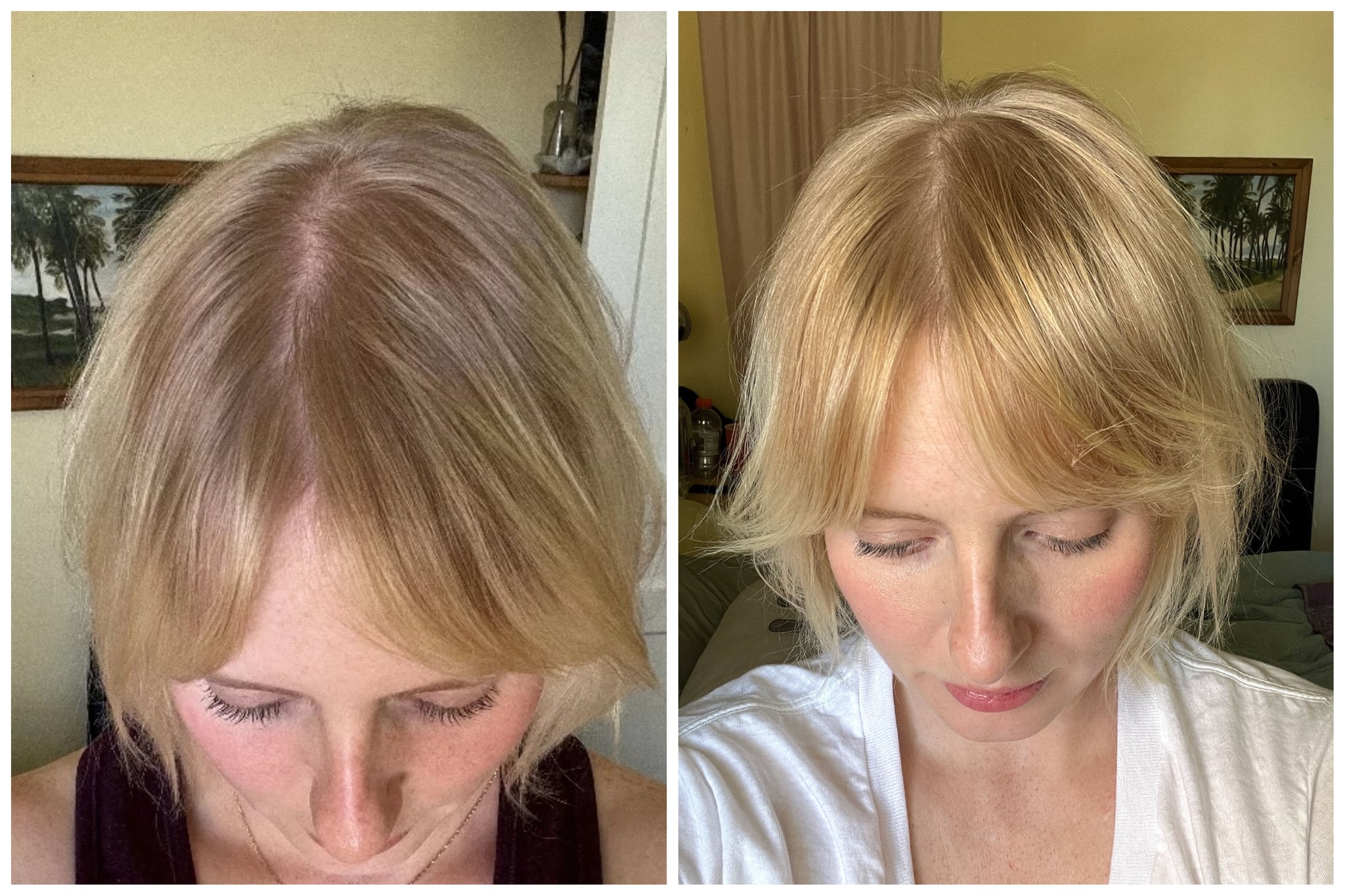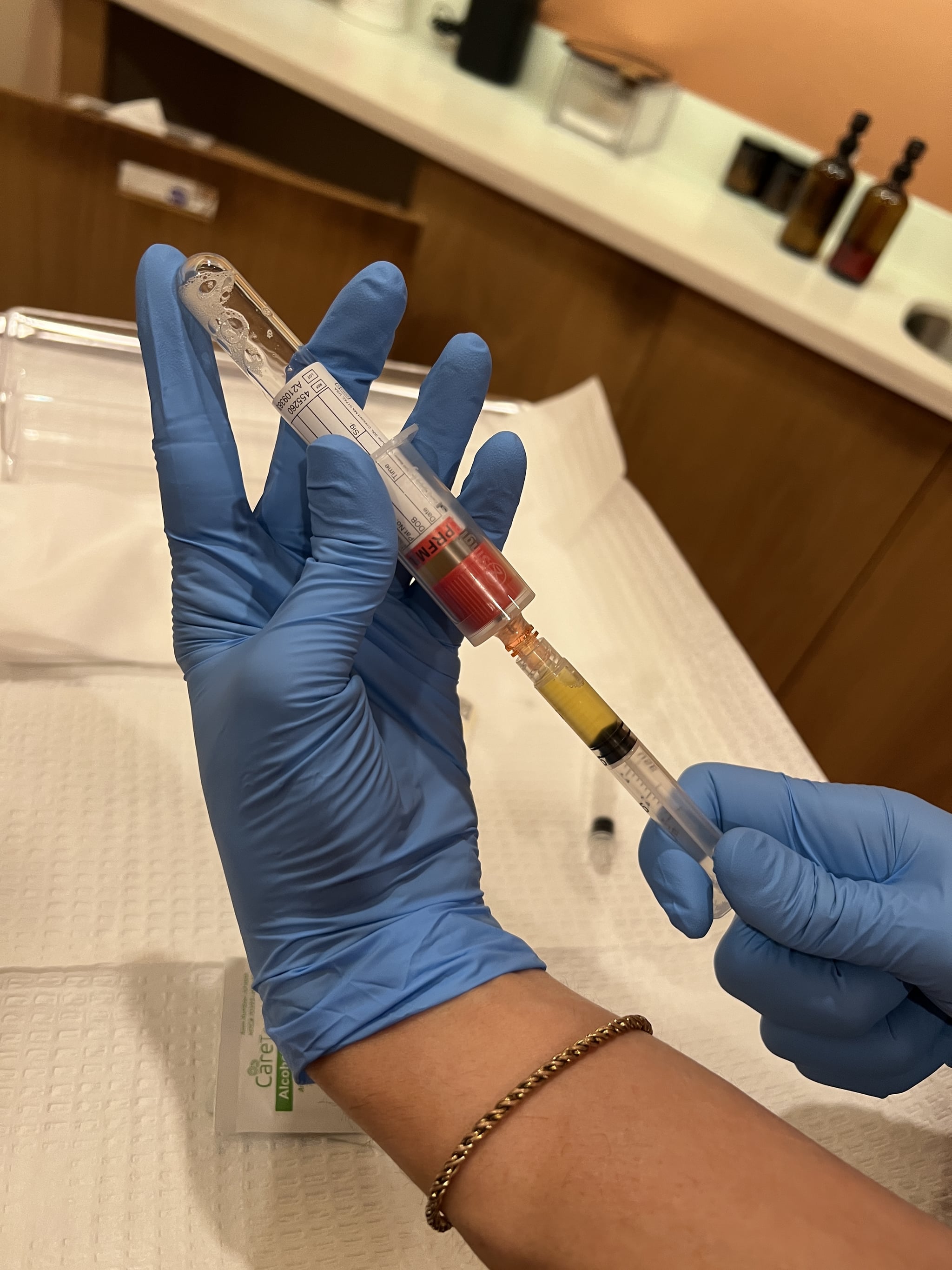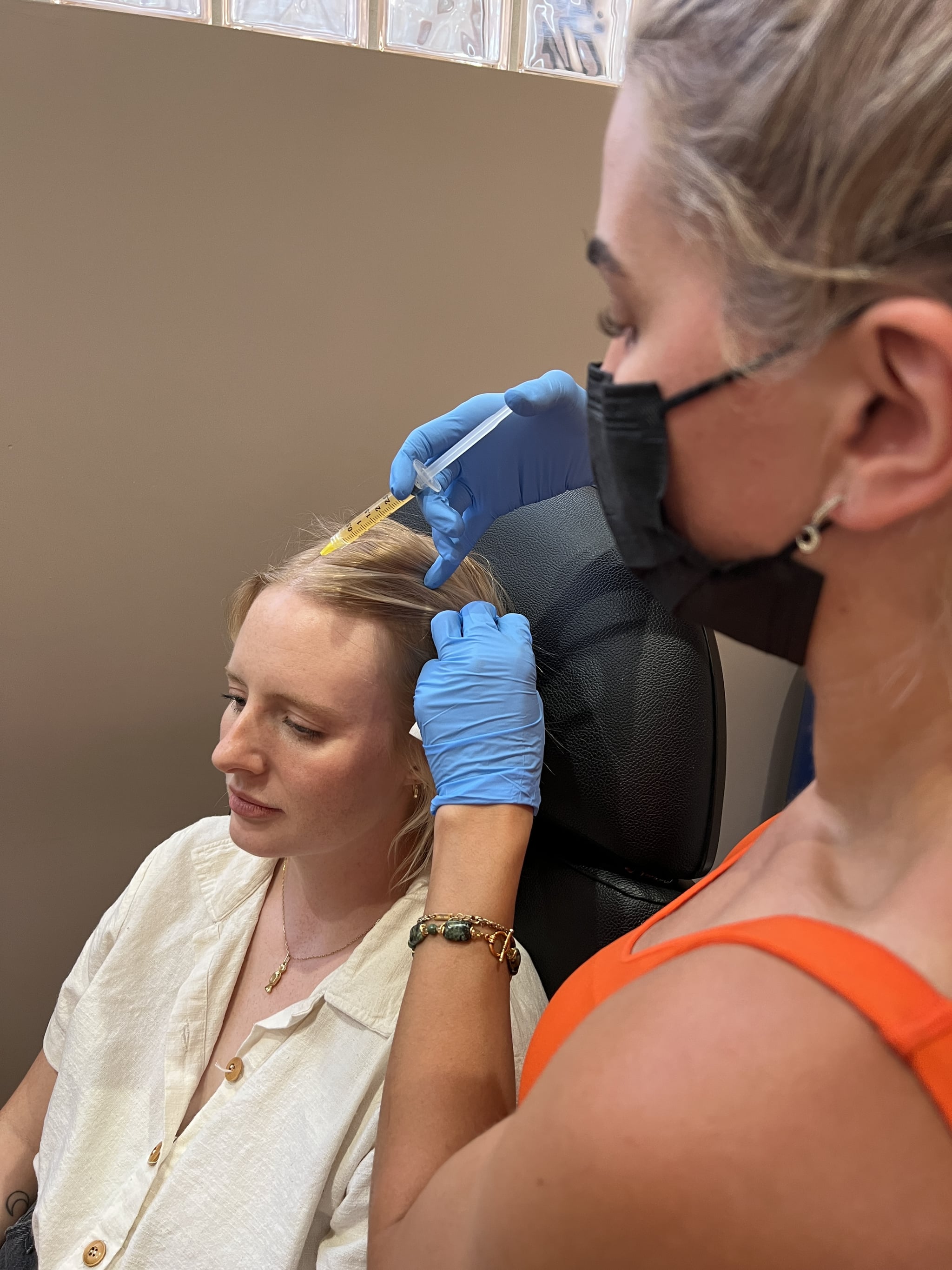
During the depths of the pandemic lockdown, I did some questionable things to my hair, including but not limited to DIY bleach. Despite getting away with minimal damage (thank you, Olaplex), I was totally unprepared for the toll that COVID and stress would take on my hair. A solid portion of my already baby-fine, thin hair just slowly disappeared into whatever universe contains all those lost bobby pins and hair ties. It probably wasn’t noticeable to anyone except for me, but it was enough hair loss to bring out some insecurities (especially with my wedding on deck) and get me looking for solutions.
I had tried supplements with slow results and flirted with various hair extensions but wanted something more impactful, long-term, and science-backed. That’s when the idea of getting PRP injections for hair loss came into play.
I popped in for a consultation with Janet Gedjeyan, RN, BSN, the aesthetic director of Los Angeles’s The Things We Do, who suggested a series of PRFM injections — scheduled in once-a-month intervals for three months — to combat my hair loss. A PRFM treatment, which stands for platelet-rich fibrin matrix, is essentially an enhanced version of PRP, or platelet-rich plasma. (You may be familiar with the latter being used in “vampire facials” and microneedling.)
I decided to give the treatment a try to see if it would help me in my hair-growth process. Keep reading to learn more about how PRFM injections work and check out my before-and-after photos.
How Do PRFM Injections For Hair Loss Work?
In a PRFM treatment, your blood is drawn and put into a centrifuge to separate the blood’s platelets into a gel-like substance — aka the fibrin matrix. “This allows for a more concentrated and localized treatment, where the platelets can signal collagen production and rejuvenation of the skin,” Gedjeyan says. “With hair growth, PRFM is an ideal treatment because the platelets are rich in growth factors that stimulate stem cells, which then strengthen and stimulate the hair follicles.”
Compared to PRP, the PRFM injection releases a more potent dose of those growth-factor-rich platelets. More potency equals stronger results. Gedjeyan also notes that this treatment is typically recommended for patients with recent hair loss or thinning and that cases of significant balding are usually referred out for hair transplants.
What to Expect During a PRFM Hair Treatment
Once I settled in for my treatment, Gedjeyan and I made a game plan for the areas she’d focus on: the crown of my head and my hairline. I was also given a glass of water to hydrate while we chatted, since we’d be drawing blood soon. A small vial of my blood was collected and quickly whisked away to a centrifuge. Upon its return, my vial had transformed into a golden PRFM substance that contained all of my platelets and what Gedjeyan dubbed “liquid gold.”
She then used a super-fine needle to inject the gel matrix into my scalp. The entire process was about 20 minutes tops and only mildly uncomfortable. I’d put it somewhere between getting a stick-and-poke tattoo or forehead Botox. Gedjeyan actually handed me a vibrator (like, an actual vibrator) to hold onto my forehead as a distraction from any pain.
After we were done, my hair was wiped down and I was instructed to refrain from washing my hair or doing sweaty workouts for 24 hours. I put on a baseball cap and went on my merry way. For the next day or two, my scalp felt a little tender to the touch — similar to the sensation of taking your hair out of a tight ponytail. Then, I scheduled my two follow-up appointments. Each time, we followed the same process: draw blood, centrifuge, inject.
How Much Do PRFM Hair Treatments Cost?
A PRFM treatment for hair loss is definitely an investment. While the exact price can vary depending on where you are in the country and where you go, the procedure will run about $1,050 per session at The Things We Do.
When Will You See Results From a PRFM Hair Treatment?
“Optimal results are seen one to three months after each treatment,” Gedjeyan says. “Once patients complete a series of three treatments, I recommend they wait a couple of months and come in for a follow-up to determine if more treatments should be done.” It’s important to point out that hair growth (even at a fast-tracked rate) is still slow — you won’t wake up one day to a new head of hair.
So I went on with my life, unbeknownst to any changes. Remember: a watched pot never boils. I had become increasingly annoyed with wearing my hair down because my ends had started looked scraggly and almost mullet-like. Then, one day, it dawned on me that my ends only looked wimpy in comparison because I had a whole new crop (!) of roots up top. I made an appointment with my hairstylist (Rachel Duhame, the queen of low-maintenance cuts at Interior Hair) for a quick trim to help mask the disproportionate layers.

I still have a month or so to go for the full effects, but so far, my hair is looking good — and much fuller. So while the treatment is an investment, if you’re struggling with hair loss, it can certainly be a worthy one.
Source: Read Full Article



